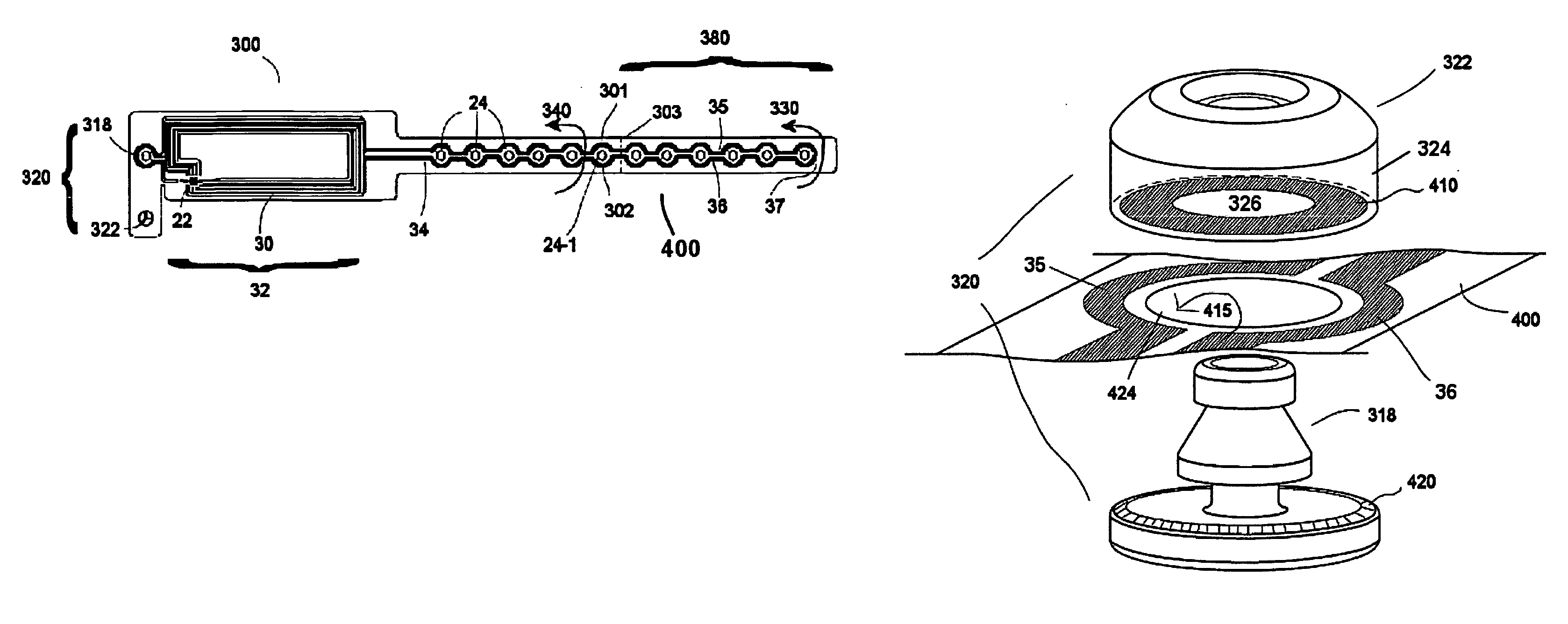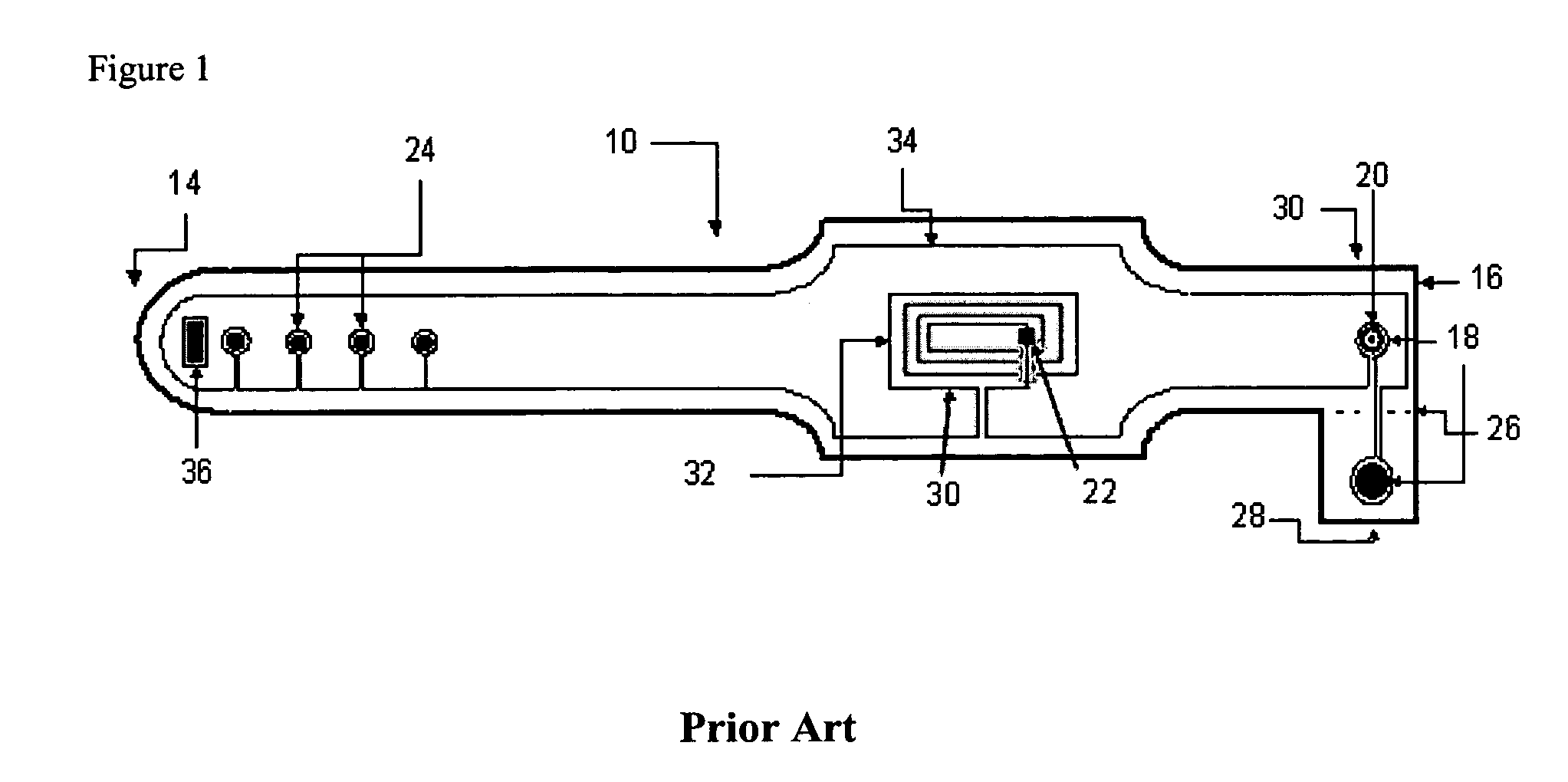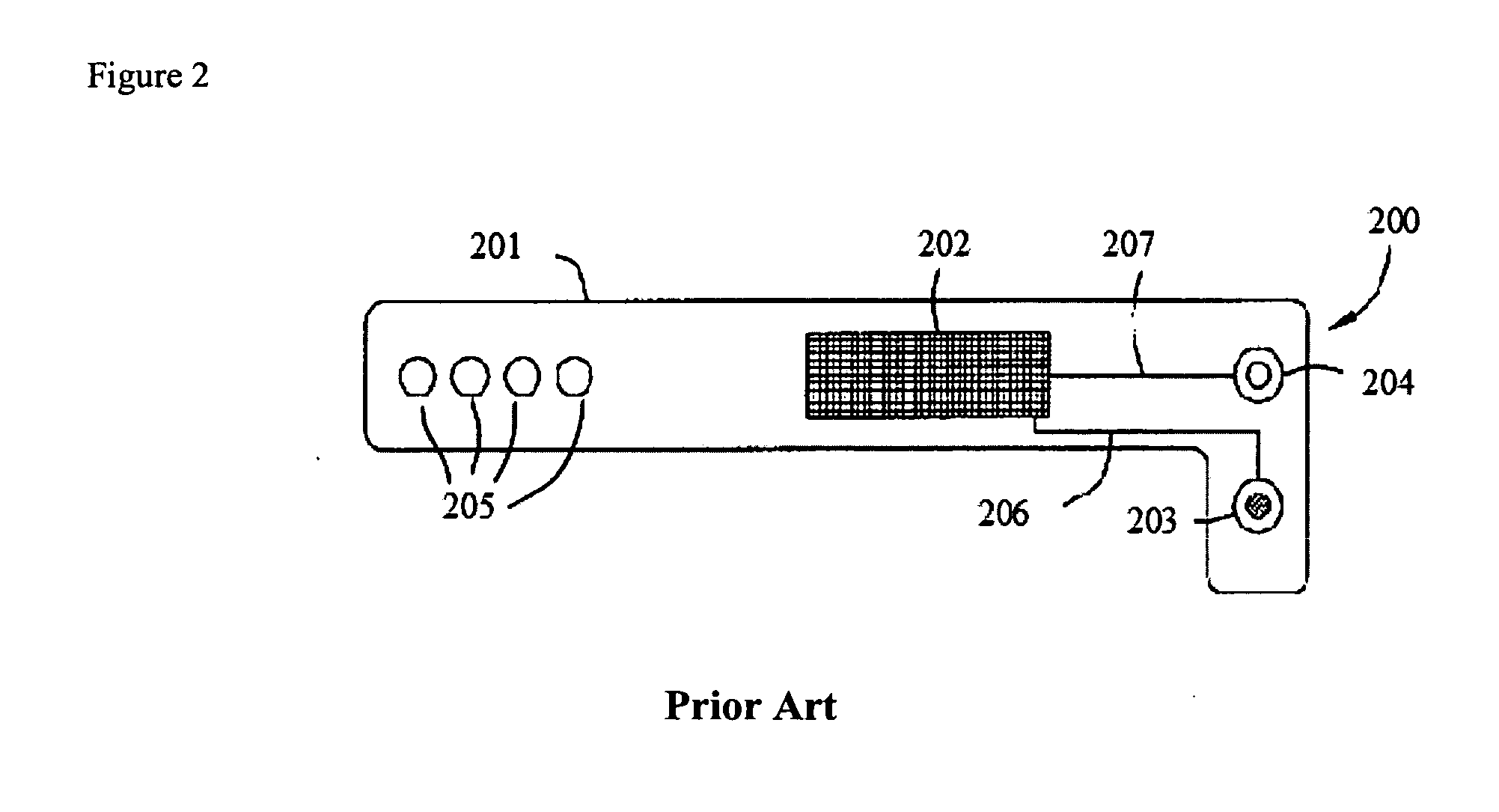Identification band using a conductive fastening for enhanced security and functionality
a technology of conductive fastening and identification band, which is applied in the direction of burglar alarm by disturbance/breaking of stretched cords/wires, instruments, etc., can solve the problems of difficult repair of broken trace and typical fragility of conductor, and achieve the effect of increasing the security of the wristband and improving the acceptability of the user
- Summary
- Abstract
- Description
- Claims
- Application Information
AI Technical Summary
Benefits of technology
Problems solved by technology
Method used
Image
Examples
Embodiment Construction
[0028] A description of preferred embodiments of the invention follows.
[0029]FIG. 1 is a general illustration of a disabling Radio Frequency Identification (RFID) bracelet 10, as known in the art, in the form of elongated band 12 with opposite ends 14, 16 that can be brought together and fastened to form a closed loop. Bracelet 10 comprises a mechanical non-reusable tamper-resistant locking mechanism 18 to fasten the opposite ends 14, 16 together and to prevent the user from attempting to open the locking mechanism 18 to remove the bracelet 10 without rendering those tampering efforts visually obvious. Locking mechanism 18 comprises a barbed peg 20 and a locking hole 21 in flap 28 at one end of said band and at least one adjustment opening or adjustment hole 24 at the opposite end of said band. Adjustment holes 24 can be used to adjust the bracelet 10 to conform to body parts of different circumferences. When ends 14, 16 are brought together, the barbed peg 20 is arranged to pass t...
PUM
 Login to View More
Login to View More Abstract
Description
Claims
Application Information
 Login to View More
Login to View More - R&D
- Intellectual Property
- Life Sciences
- Materials
- Tech Scout
- Unparalleled Data Quality
- Higher Quality Content
- 60% Fewer Hallucinations
Browse by: Latest US Patents, China's latest patents, Technical Efficacy Thesaurus, Application Domain, Technology Topic, Popular Technical Reports.
© 2025 PatSnap. All rights reserved.Legal|Privacy policy|Modern Slavery Act Transparency Statement|Sitemap|About US| Contact US: help@patsnap.com



